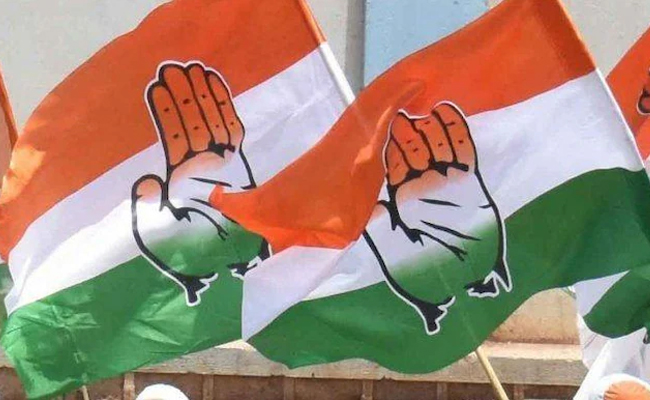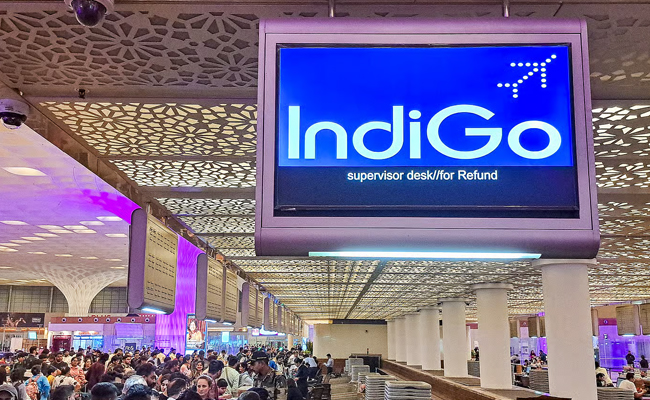New Delhi (PTI): The Congress on Friday accused the Centre of going "full throttle" on attempts to deny Adivasis justice and said the Dharti Aaba Janjatiya Gram Utkarsh Abhiyan (DAJGUA) was a "full mockery" of the Forest Rights Act, illustrating the government's hypocrisy.
The Opposition party also claimed that DAJGUA, in "typical Manuvadi fashion", only sees these communities as forest-dwelling 'vanvasis' who are 'labhaartis' (beneficiaries), rather than political and economic actors in their own right.
Congress general secretary in-charge communications Jairam Ramesh said today is the 150th birth anniversary of 'Dharti Aaba Bhagwan Birsa Munda', one of the greatest sons of India and a fierce advocate of self-governance and social justice.
"The non-biological PM is in Jamui, Bihar paying lip service to the cause of the Adivasis on this occasion, even as his Government goes full throttle on attempts to deny Adivasis justice," Ramesh alleged in a statement.
"The Dharti Aaba Janjatiya Gram Utkarsh Abhiyan (DAJGUA) - named after Bhagwan Birsa Munda, but a full mockery of the Forest Rights Act- illustrates this hypocrisy," he said.
Ramesh said the Forest Rights Act ( FRA 2006) passed by the Manmohan Singh's government was a revolutionary law and it transferred power and authority over forests from the forest department to the gram sabha.
In another departure from precedent, the Ministry of Tribal Affairs was empowered as the nodal authority to implement the law, he pointed out.
The FRA empowered the Adivasi community and gram sabhas to govern and manage forests as a major reform to ensure democratic governance of forests, Ramesh said.
"After the revolution, however, came Narendra Modi's counter-revolution.
DAJGUA fundamentally undoes this historic law and the democratic reform in forest governance," he claimed.
Ramesh said it dilutes the authority of Ministry of Tribal Affairs by giving authority to the Ministry of Environment, Forests, and Climate Change in the implementation of FRA.
Rather than empower the FRA's statutory bodies - namely the gram sabha, the sub-divisional committee, the district level committee, and the state level monitoring committee - DAJGUA has created a vast parallel institutional mechanism of FRA cells at the district and sub-divisional levels and arming them with large funds and contractual staff, he pointed out.
They are directly under the centralised bureaucratic control of Ministry of Tribal Affairs and State Tribal Welfare Departments, and lack accountability to the FRA's statutory bodies.
DAJGUA empanels and engages technical agencies/domain experts /corporate NGOs for the FRA implementation and CFR management activities of the gram sabhas by the State Tribal Welfare Departments, he said.
Ramesh argued that these FRA cells are to take over what the FRA statutory bodies are required to do by law, leaving these statutory bodies to be appendages to these FRA Cells, nominal bodies reduced to carrying out the biddings of these FRA cells, he said.
"This has been done without attention to the economic and social sensitivities involved, even as a massive budget has been allocated for this (Rs. 1 lakh for the technical agencies for each CFR). For example, in Madhya Pradesh, the BJP government engaged the Maharashtra Knowledge Company Limited (MKCL) to create the VanMiTRA app, which made the transparent process of submitting FRA claims into an obscure, online process that technical operators took charge of," he said.
Three lakh claims were rejected as a result, he added.
Adivasi groups are justifiably worried about the same happening at a large scale due to the engagement of such tech agencies, Ramesh said.
The forest department has now been allowed to be a part of the gram sabha's own committee for management of community forest resources, a direct violation of the FRA, Ramesh said.
"The FRA was enacted for empowering Adivasi and forest-dwelling communities to govern and manage their resources. DAJGUA, in typical Manuvadi fashion, only sees these communities as forest-dwelling vanvasis who are labhaartis, rather than political and economic actors in their own right," he alleged.
As captured in the Adivasi Sankalp unveiled by Rahul Gandhi during the Bharat Jodo Nyay Yatra in Nandurbar, Maharashtra on the 12th of March, 2024, the Congress is committed to the honest and fair implementation of the FRA, Ramesh asserted.
"It is part of our guarantees to the people in both Jharkhand and Maharashtra and will continue to be a priority for upcoming assembly and parliamentary elections," he stressed.
Tagging his statement, Ramesh said on X, "As the non-biological PM pays lip service to the Adivasi cause by celebrating the 150th birth anniversary of Dharti Aaba Bhagwan Birsa Munda today in Jamui, we should not be fooled: his Dharti Aaba Janjatiya Gram Utkarsh Abhiyan (DAJGUA) is nothing but an absolute mockery of the revolutionary Forest Rights Act (2006) and Adivasi self-governance."
Let the Truth be known. If you read VB and like VB, please be a VB Supporter and Help us deliver the Truth to one and all.
Bengaluru (PTI): The Karnataka government has issued directions to municipal corporations across the state to regulate and prohibit feeding pigeons in public places, citing serious public health concerns.
Deputy Secretary to Government V Lakshmikanth has written to the Urban Development Department requesting it to issue directions to the Greater Bengaluru Authority (GBA) and all municipal corporations to take immediate steps to implement the measures.
In an official note dated December 16 issued by the Health and Family Welfare Department and released to the media on Wednesday, the department said uncontrolled feeding of pigeons in public places has resulted in large congregations of birds, excessive droppings and serious health concerns, particularly respiratory illnesses linked to prolonged exposure to pigeon droppings and feathers such as hypersensitivity pneumonitis and other lung diseases.
ALSO READ: Chinese GPS tracker found on seagull near Karwar Coast
"The commissioner, the Greater Bengaluru Authority and the Commissioners and chief officers of other municipal corporations shall take necessary action to mitigate the causes of dangerous disease spread by pigeon and enforce specified guidelines in their respective jurisdiction," the note said.
According to the department, these include a prohibition on feeding pigeons or causing pigeons to be fed in areas where it may cause nuisance or pose a health hazard to the public. Pigeon feeding shall be permitted only in designated areas in a controlled manner, subject to certain conditions.
"The designated areas may be selected in consultation with stakeholders. The responsibility for upkeep of the designated areas and compliance to the directions shall be taken up by some charitable organisation or an NGO. The feeding in designated areas shall be permitted only for some limited hours in the day," it said.
The note further stated that authorised officers of local authorities shall issue on-the-spot warnings and may impose fines for violation of the order, or lodge complaints to prosecute offenders under Sections 271 (Negligent act likely to spread infection of disease dangerous to life) and 272 (Malignant act likely to spread infection of disease dangerous to life) of the Bharatiya Nyaya Sanhita.
It also directed local authorities to conduct public awareness campaigns, including the display of signboards, banners and digital messages, explaining the health hazards associated with pigeon droppings and feathers, the content of the regulatory directions and penalties for violations, and alternative humane methods of bird conservation that do not endanger public health.





